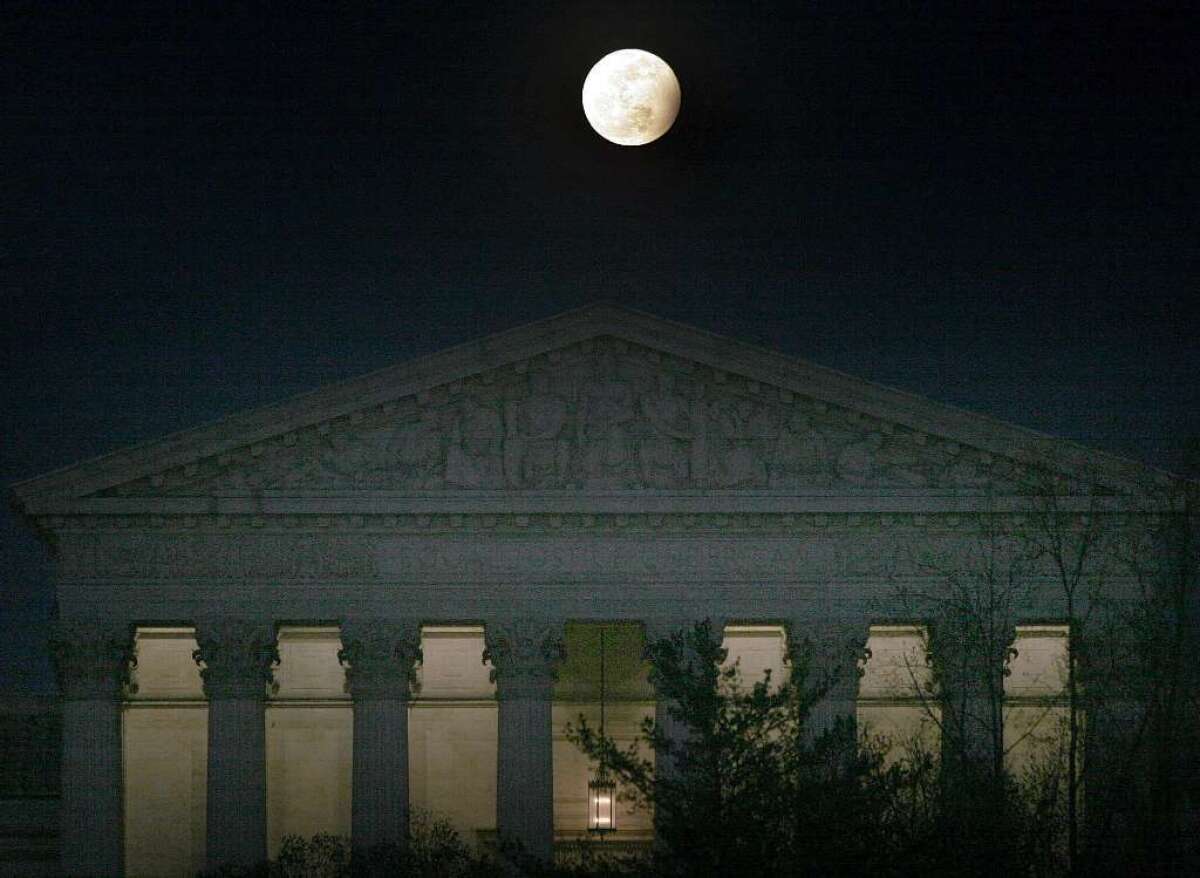Penumbral lunar eclipse Friday: How you can see it

- Share via
On Friday evening, the moon will pass through the hazy outer shadow of the Earth, and if you look carefully, you may be able to see the minor celestial show.
The event is called a penumbral eclipse, and, to be fair, it is not especially dramatic. The outer shadow of the Earth known as the penumbra is not dark enough to fully obscure the moon; instead it will just sort of darken it a bit.
PHOTOS: Moons of the solar system
Here in Southern California, your window of opportunity to witness the minor lunar eclipse will be fairly short. The moon will pass deepest into the penumbral shadow at 4:50 p.m. PDT, but moonrise here isn’t until about 6:05 p.m. PDT.
But don’t fret. Anthony Cook, who heads the telescope program at Griffith Observatory, said the penumbral lunar eclipse will still be visible for about 20 minutes after moonrise on the West Coast.
The eclipse won’t technically end until 6:52 p.m., he said, but for the last half hour, it will be so subtle that you will probably not be able to detect it.
“It is a subtle eclipse to begin with,” he said. “Even if you were in the ideal place to look at it, it would just look like the moon was a little darker than usual. Most people wouldn’t notice it if they were not alerted to it ahead of time.”
But now you have certainly been alerted ahead of time. So challenge yourself. Set your alarm for 6:05, head outside, and see if the lower edge of the moon doesn’t look a little bit shadier than usual.
And if you see it, tweet at me, and we’ll celebrate together.
Follow me on Twitter for more sky watching stories like this.
ALSO:
A fossilized brain, 520 million years old
An alien world dripping with water? Scientists see possibility of life
Solar eclipse coming Nov. 3: How you can help schoolchildren see it







